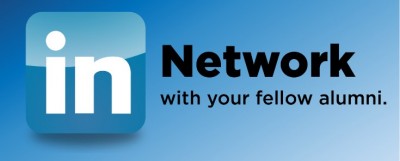

Recent changes made by LinkedIn to the rules of how Groups operate and are managed have raised serious debate in online communities about their utility. At its core, the debate centres on changes to administrators’ abilities to approve membership and to moderate posts before they go public, which are also critical to Alumni Group administrators.
To understand the rationale behind these changes, it’s essential to consider LinkedIn’s business challenges and LinkedIn higher education marketing. In the constantly evolving world of social media, where the rule is to grow or die, LinkedIn has been working hard to maintain its growth, relevance, and alumni engagement strategies.
How effective are LinkedIn groups? LinkedIn’s stated priorities here are to improve the quality of content and user experience. More practically, it will likely increase its members’ usage and engagement.
Automatic membership in public Groups is one way to expand the usage of Groups. They also believe that the automatic posting of members’ posts (without any moderation) will increase Group members’ engagement and whether these fundamental changes to how Groups work are acceptable to Group moderators.
So, what exactly are these significant changes and implications?
There are now two types of Groups – standard (previously called “open”) and private (previously called “unlisted”).
All content is private. Reference to the standard Groups appears in searches and the LinkedIn Group directory, but the private groups don’t appear anywhere. Members of standard Groups can invite and approve their first-degree connections as new members of a Group.

These changes are built on three main assumptions:
- Private is better. Generally, they know members will engage more actively if their content is privately contained within the Group.
- The engagement of members will increase as a response to the immediacy of automatically published posts.
- Spam and self-promotion are bad. The promo tab has been removed, and these changes have structurally limited the ability to self-promote. The increased sensitivity of their content filters will more actively filter spammy content.

How do these changes affect how you operate your LinkedIn Alumni Engagement Group?
- Loss of control over who joins your group (if it is maintained as a standard Group). Group managers can no longer vet new members against their alumni database. Opening up the Group to members’ first-degree connections and approvals will dilute the integrity of your alumni Group “segment” and their interests.
- If your Group is private, it will completely lose public visibility. Of course, this is the flip side of the first point, but even private Groups need a bit of public branding to assert their value to their membership.
- The admin of your alumni Group will need to spend more time and care monitoring conversations in the Group. Disruptive or offensive content can easily be published on the Group, and it will stay there until your admin gets to it and removes it. The option of putting all posts from a specific individual into a moderation queue may be available, but this assumes pre-knowledge of problematic members.
- If you previously had sub-groups set up, i.e. for local or state-level alumni chapters, they have now been automatically elevated to full Groups. If this happens to your institution, you must determine how to reintegrate these individuals from your sub-groups into your main Group.
The impact of these changes on higher ed Alumni Groups will take time to understand fully. New normals for membership rates, quality of content, engagement levels, and the required time for your group admins to complete their tasks will define themselves in the coming months.
There is also a lot of discord about these changes right now, and it is not unreasonable to suggest that, given pressures by major corporate brands who rely heavily on LinkedIn Groups, some of these conditions might change.
We’ll have to wait and see if it all sticks, but in the meantime, you’ll need to pay more attention to your Groups to weather the transition and see where this takes us.
What are your reactions to these new operating conditions for LinkedIn Alumni Groups? How will they change how you use Groups in your alumni relations?
FAQ To Consider:
How effective are LinkedIn groups?
LinkedIn’s stated priorities here are to improve the quality of content and user experience. More practically, it will likely increase its members’ usage and engagement.






